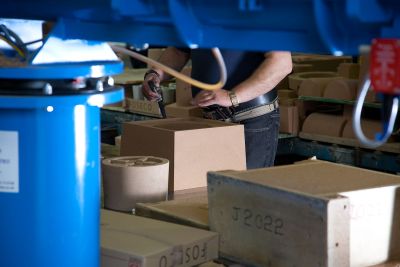Published - 11th Jul 2016

Whether you are producing components for the defence, aerospace, marine, energy or automotive sectors, the two key considerations are always quality and cost.
So, when a prospective customer approached us to find out whether we could cast high-precision parts more economically than machining from solid metal, our response was a resounding ‘yes’. In fact, we were able to significantly reduce our customer’s manufacturing costs.
So, what are the differences between the two techniques?
In basic terms, machining from solid involves taking a large block of metal and cutting out the required component shape using CNC machining tools. This process can be costly in terms of tooling, machine programming and materials.
Sand casting, on the other hand, is a relatively cost-effective process, with quick set-up times. As discussed in this blog previously, the technique involves pouring molten metal into a sand mould, which contains a hollow cavity of the desired shape. The solidified part is then removed from the mould and finished to complete the process. There is significantly less material wastage using this technique compared with machining from solid. In the customer example mentioned earlier, we were able to reduce the amount of metal used by 95%.
Aluminium sand casting can be used to produce components of just about any size and shape, from the most basic to those of far greater complexity – which is simply not possible with machining. Intricate details can also be added through the use of cores in the mould.
Aluminium sand casting is also much more economical for medium-volume production and the patterns and running systems ensure consistency with every component.
Whilst sand casting does provide a good finish, machining from solid does produce an excellent surface texture and is also more suitable for prototyping. If a customer wishes to see a prototype before committing to full-scale production, this would usually be completed by machining and, once all the design elements have been finalised, this prototype can be used to help guide the casting process.
If you would like to find out more about the benefits of aluminium sand casting for component manufacture, please call +44 (0)1794 512685 or email sales@haworthcastings.co.uk
If you have a project, talk to our experienced sales team
Contact us